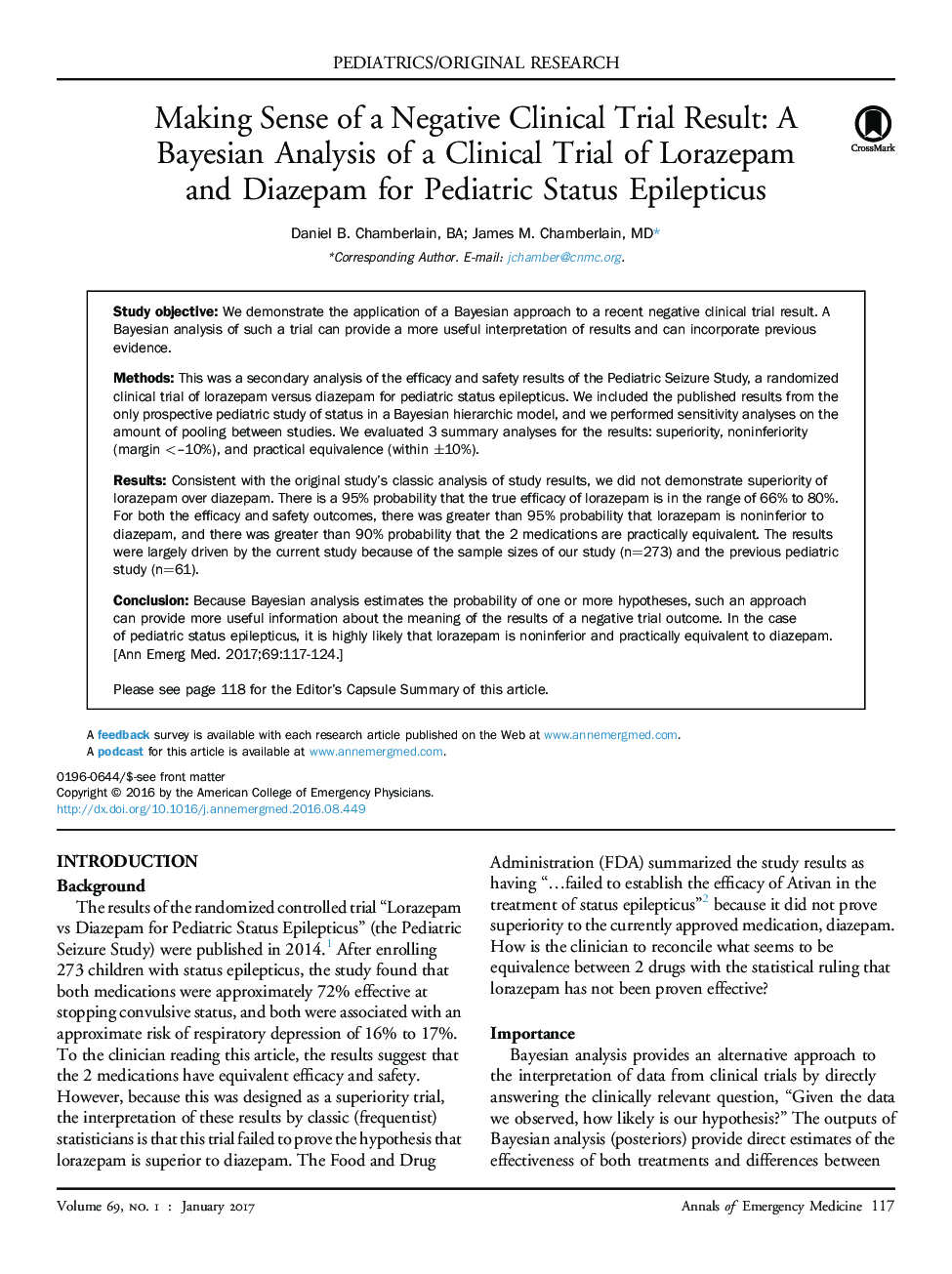| Article ID | Journal | Published Year | Pages | File Type |
|---|---|---|---|---|
| 5651777 | Annals of Emergency Medicine | 2017 | 8 Pages |
Study objectiveWe demonstrate the application of a Bayesian approach to a recent negative clinical trial result. A Bayesian analysis of such a trial can provide a more useful interpretation of results and can incorporate previous evidence.MethodsThis was a secondary analysis of the efficacy and safety results of the Pediatric Seizure Study, a randomized clinical trial of lorazepam versus diazepam for pediatric status epilepticus. We included the published results from the only prospective pediatric study of status in a Bayesian hierarchic model, and we performed sensitivity analyses on the amount of pooling between studies. We evaluated 3 summary analyses for the results: superiority, noninferiority (margin <-10%), and practical equivalence (within ±10%).ResultsConsistent with the original study's classic analysis of study results, we did not demonstrate superiority of lorazepam over diazepam. There is a 95% probability that the true efficacy of lorazepam is in the range of 66% to 80%. For both the efficacy and safety outcomes, there was greater than 95% probability that lorazepam is noninferior to diazepam, and there was greater than 90% probability that the 2 medications are practically equivalent. The results were largely driven by the current study because of the sample sizes of our study (n=273) and the previous pediatric study (n=61).ConclusionBecause Bayesian analysis estimates the probability of one or more hypotheses, such an approach can provide more useful information about the meaning of the results of a negative trial outcome. In the case of pediatric status epilepticus, it is highly likely that lorazepam is noninferior and practically equivalent to diazepam.
